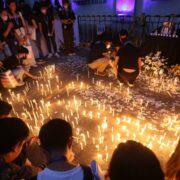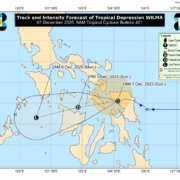Stamps honor 4 National Artists
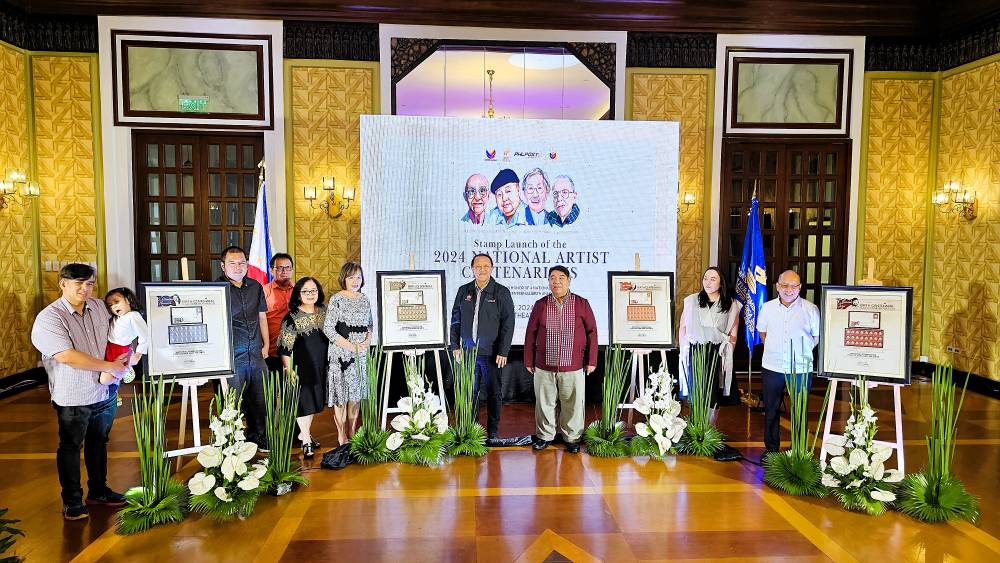
On Dec. 18, the National Commission for Culture and the Arts (NCCA), in partnership with the Philippine Postal Corp. (PHLPost), released four commemorative stamps celebrating the centennial birth anniversaries of National Artists J. Elizalde Navarro (Visual Arts), Eddie Romero (Film and Broadcast Arts), Alejandro Roces (Literature) and F. Sionil Jose (Literature).
The stamps were unveiled at the historic Metropolitan Theater in Manila, with family members of the national artists present.
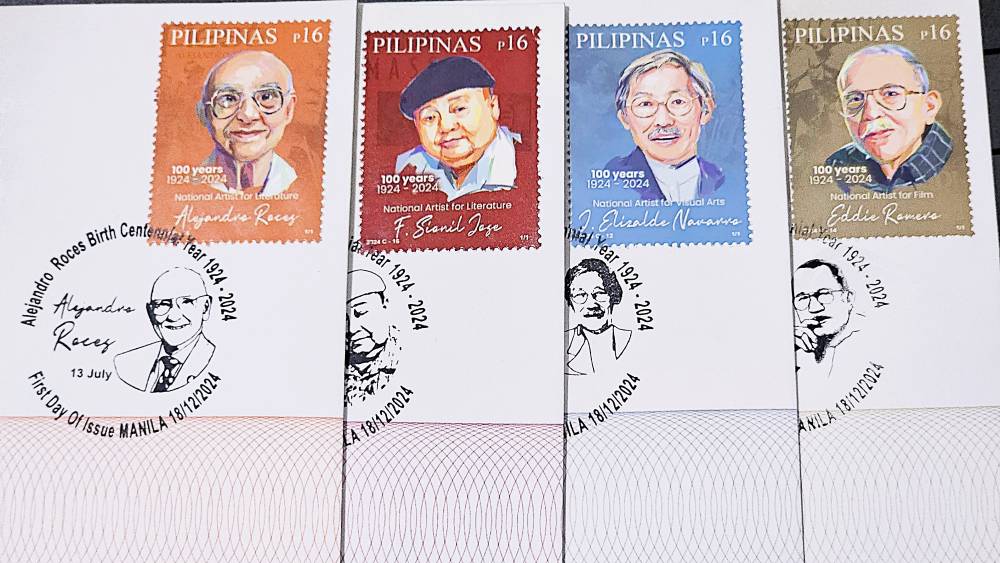
NCCA deputy executive director Bernan Joseph Corpuz said, “These stamps, although small in size, carry a big meaning. We not only celebrate their past achievements, but this is also the movement [toward] the future of our country’s arts and culture, which continues to draw inspiration from their work. Let us continue to remember the legacy of their lives, and take this time to reflect on their lasting contributions.”
But who are these national artists?
J. Elizalde Navarro
Born on May 22, 1924 in Antique, Navarro is known for being a proficient painter and sculptor. He spent over 40 years on drawing, printmaking, graphic design, painting, and sculpting. He was a master of colors, which is evident in his large four-panel “The Seasons” (1992: Prudential Bank collection). Other notable works include his ’50s and ’60s fiction illustrations for the magazine “This Week” of the Manila Chronicle and the rotund, India-ink figurative drawings for Lydia Arguilla’s storybook, “Juan Tamad.”
Representing the Elizalde family was Dennis Elizalde, the great-nephew of the national artist. In an interview, Dennis shared how his great-uncle was not only a bright visionary in the field of visual arts but also a guiding light when he ventured into it as a teen. As an apprentice, he got the opportunity to witness how his great-uncle got things done.
“He was very fast! It took him about two to four days to get a painting done … He tried to bring out your own personality, your own individualism, to open the eye of your mind,” he said.
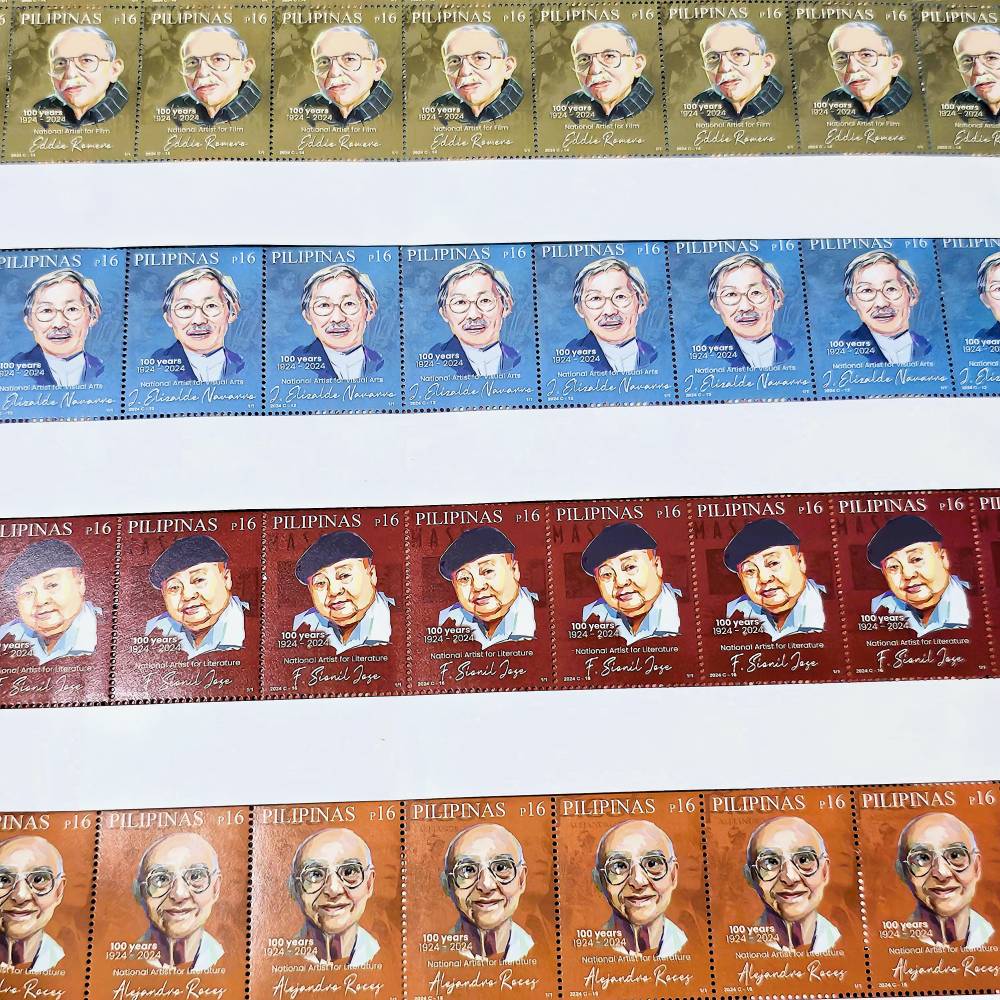
F. Sionil Jose
Jose, born Dec. 3, 1924, was a literary giant best known for his five-novel masterpiece, “The Rosales Saga.” Comprising “The Pretenders,” “Tree,” “My Brother, My Executioner,” “Mass,” and “Po-on,” “The Rosales Saga” captures Philippine history while simultaneously narrating lives that embody the social struggles of the nation.
Jose was key in founding the Philippine chapter of Pen International. He also owned and managed the Solidaridad Bookshop.
Alejandro Roces
Roces, born July 13, 1924, was a short story writer and essayist. He is considered the country’s best writer of comic short stories. He is also celebrated for being a champion of Filipino culture, notably leading the campaign to change the country’s Independence Day from July 4 to June 12 and helping recover Jose Rizal’s manuscripts when they were stolen from the National Archives.
We were able to talk with Bianca Roces Pedrosa, a granddaughter of Roces. Bianca, who had lived with Roces, describes herself as lolo’s girl to a very disciplined grandpa, who had a regimen of starting his day at 5 a.m. to accomplish all sorts of things.
“He was also an animal lover, introducing me to animals that were uncommon, such as snakes and frogs. He would also take me to different cultural events, such as theaters and fiestas … He was so thoughtful and caring, and he really advocated for our arts and culture,” Bianca said.
She also shared how her lolo taught her the power of the pen. “Sometimes, he would send his articles for me to revise. He had such a wealth of knowledge. Back in the day, there was no Google, so I’d go to him whenever I had questions, but he wouldn’t tell me directly; he would encourage me to find the answer on my own.”
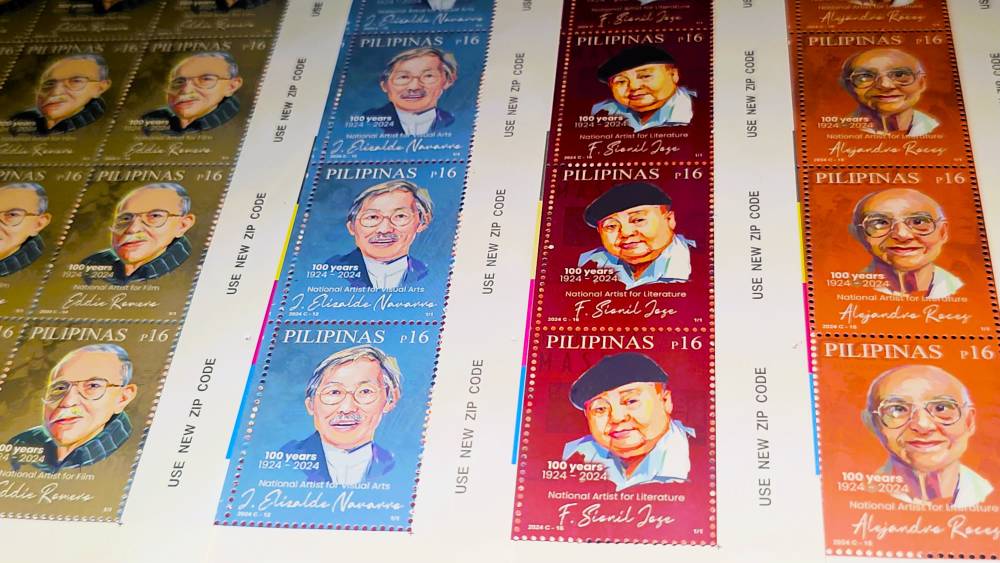
Eddie Romero
Romero was a screenwriter, film director, and producer. Born on July 7, 1924, the filmmaker devoted his life to the art of cinema, spanning three generations of filmmakers. He had over seven decades of experience in the film industry. One of his most notable contemporary works was his 13-part series “Noli Me Tangere,” which brought the national hero’s novel to a new generation of viewers.
PHLPost postmaster general Luis Carlos said, “These national artists have left indelible marks in Philippine literature, arts, and cinema. Through these postage stamps, we honor these luminaries and ensure their legacy lives on. We invite the public to collect and cherish these stamps as a symbol of our nation’s cultural heritage and as a tribute to the artists who have shaped our destiny.”
In-house artists of PHLPost designed the stamps.
The stamps may be purchased for P16 each at the Manila Central Post Office Postal Counter located at the Annex Building in Liwasang Bonifacio and soon at select postal station counters throughout the country.




